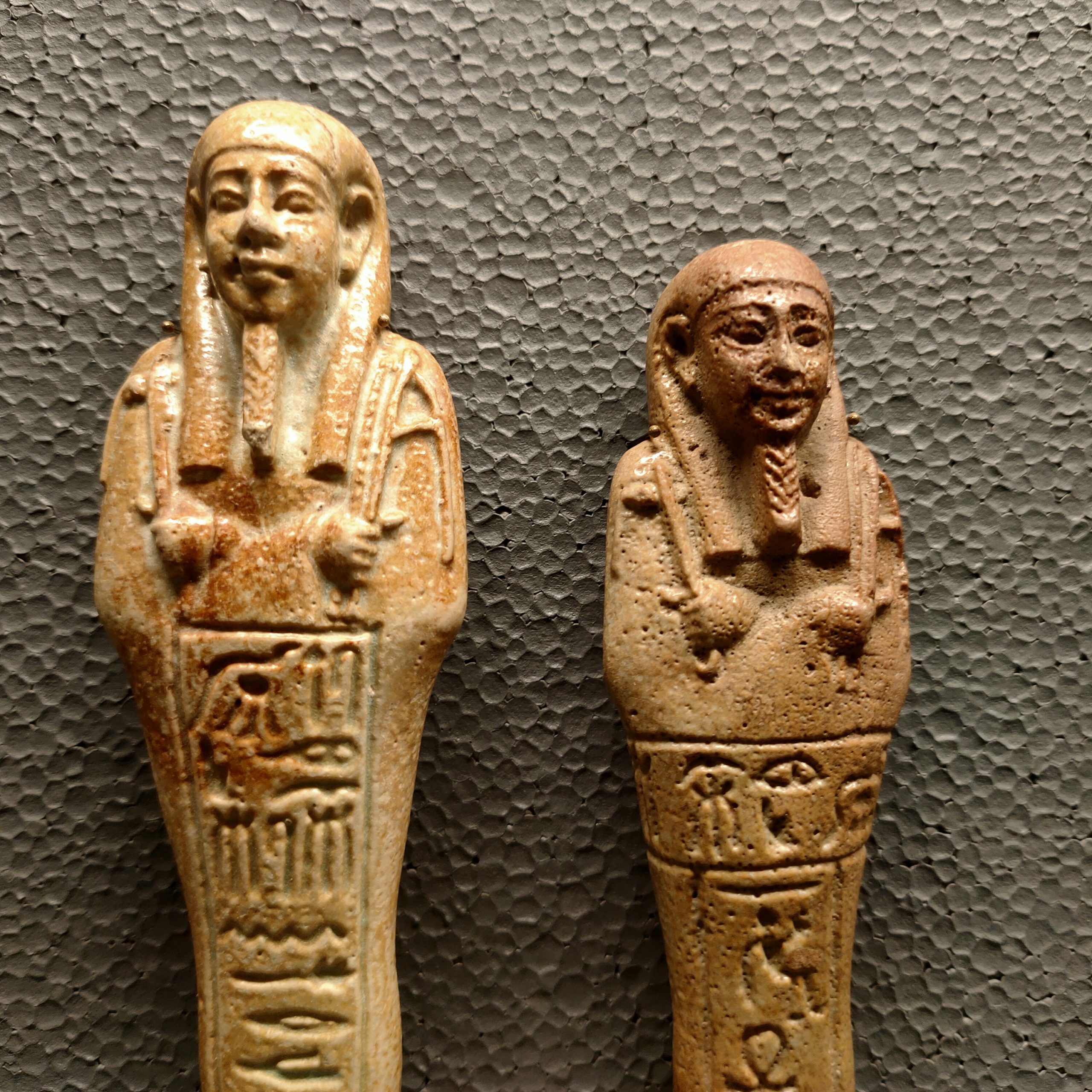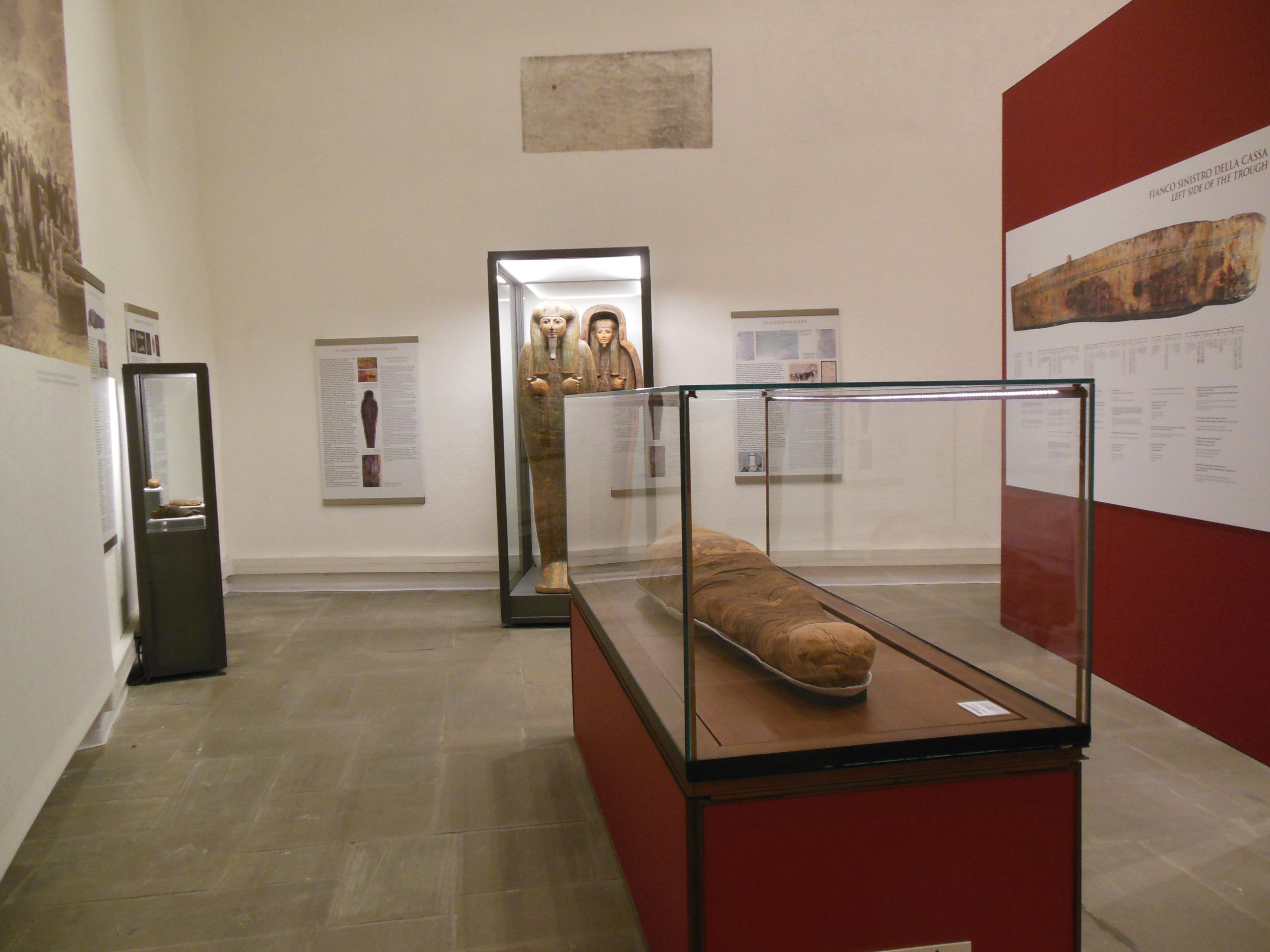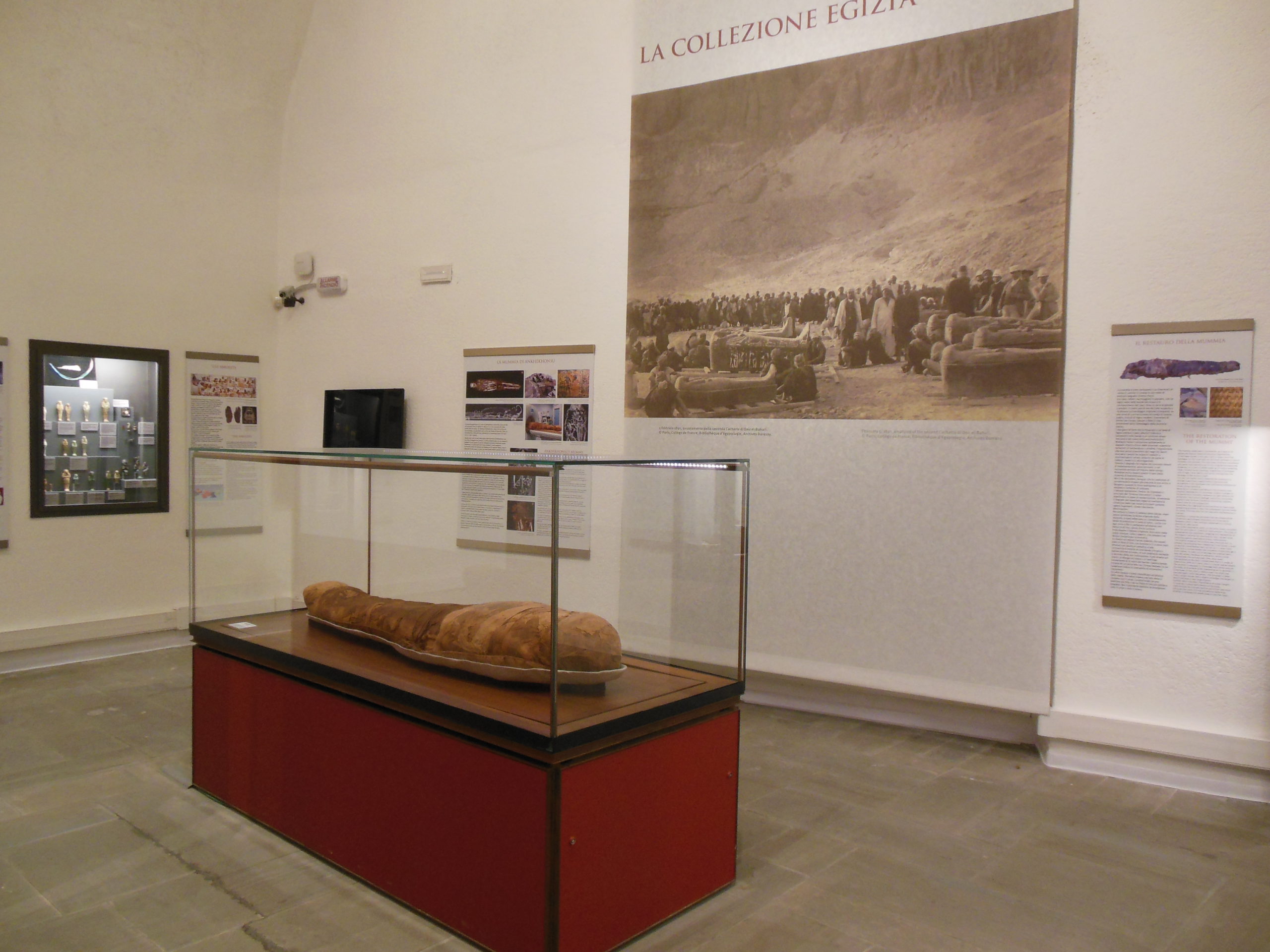The Egyptian Collection of Bergamo was built up selectively and randomly during the 19th century, in line with a passion for Egyptian antiquities which spread all over Europe after Napoleon’s campaign in Egypt.
It is not known how the Museum acquired the small funerary objects and where they originally came from. Instead, the donation made in 1855 by the Italian consul at Alexandria, Giovanni Venanzi, to the city of Bergamo of a mummy with its sarcophagus is well documented. As Venanzi states in the accompanying letter addressed to the Mayor of Bergamo, the sarcophagus came from Luxor, the ancient Thebes.
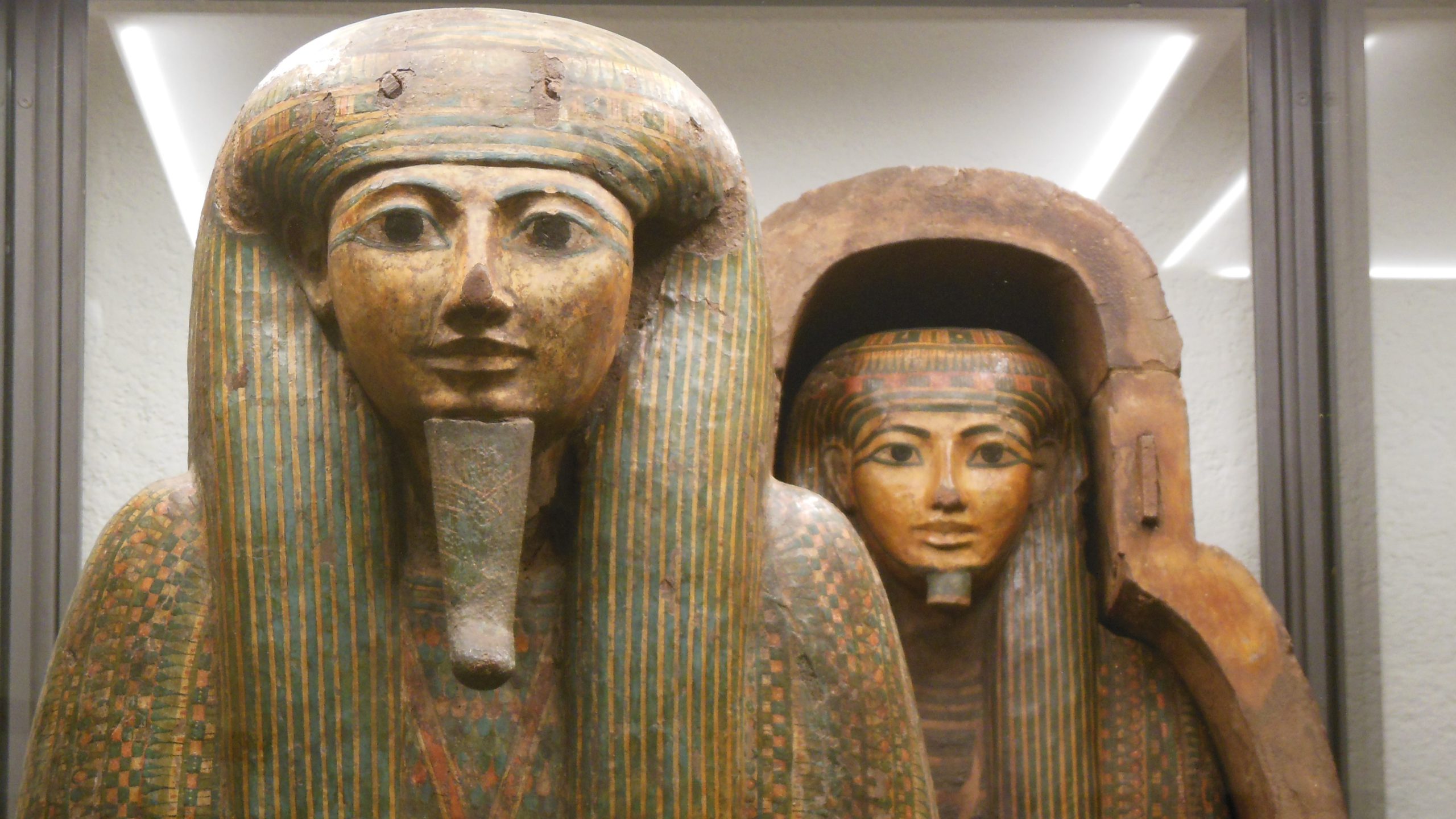
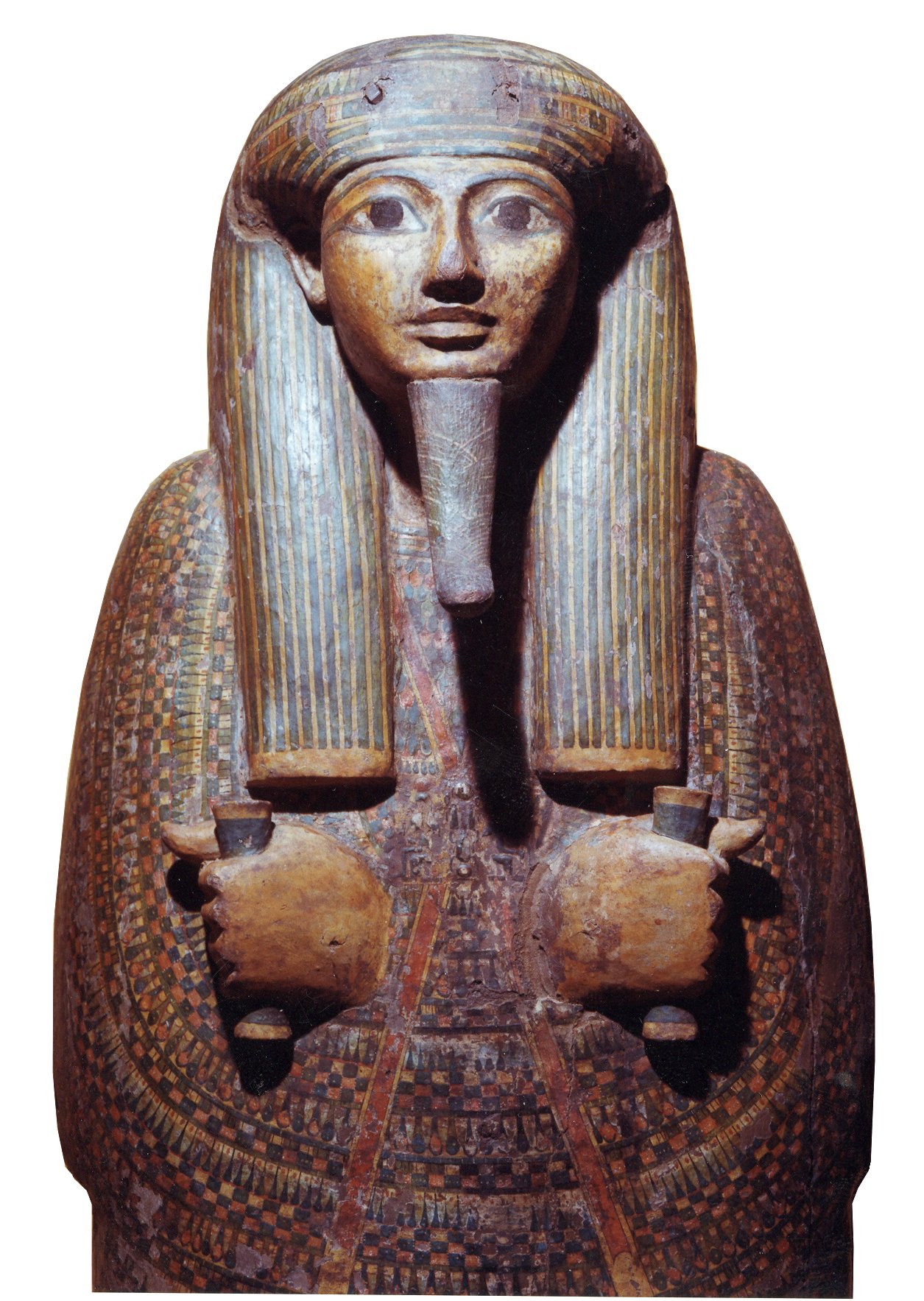
The name of the deceased, which appears five times on the sarcophagus, is Ankhekhonsu, which means “the god Khonsu lives”. This name and his role as a priest and scribe of the granary for the offerings to the god Amon confirm that he lived in the Theban area.
The sarcophagus dates back to the Third Intermediate Period, between the late 21st and the early 22nd dynasty (969-900 BC). It is an anthropoid sarcophagus made of painted cedar wood: religious scenes and hieroglyphic texts stand out against a yellow background. The lid features a relief of the dead man’s head, with a wig, a ritual beard, a red stole and a large collar covering his chest and arms. His hands, crossed on the chest, hold two papyrus scrolls. Inside the trough, resting directly on the mummy, there was a second lid with a similar decoration.
Analyses made with modern medical techniques –TC scan and laparoscopic endoscopy – revealed that the mummy was unwrapped in antiquity, thus interrupting the mummification process. It was then hastily reassembled and the bones are not anatomically articulated anymore, also because it was moved many times in the past and, most likely, displayed vertically when it arrived in Bergamo. After these analyses the mummy was restored, in order to preserve it and display it to the public.
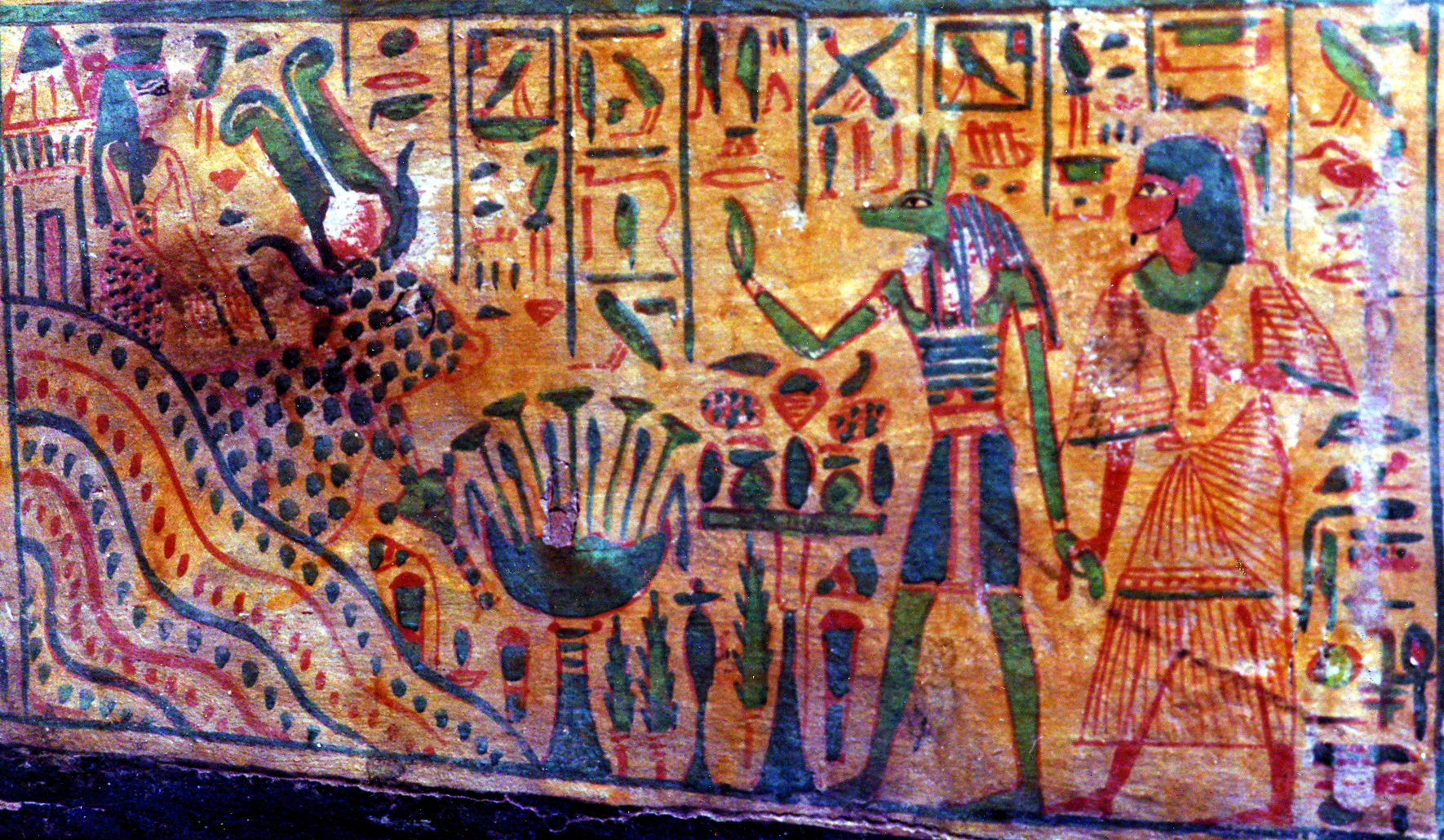
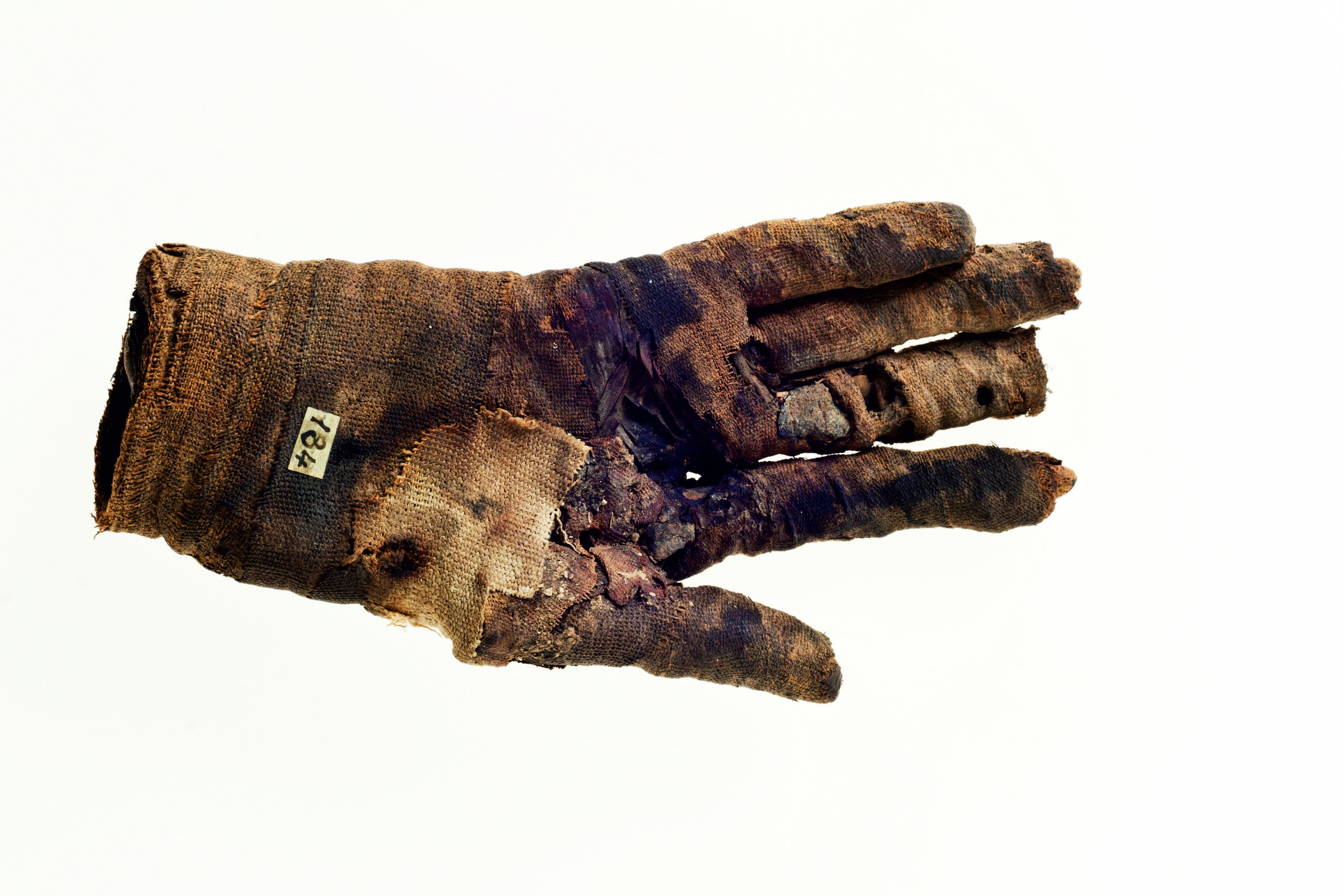
The Archaeological Museum’s Egyptian collection also includes a number of small objects: bronze statuettes, amulets and, above all, shabti, small mummiform figurines in terracotta or fayence, depicted holding mattock and hoe and with a bag of seeds on their shoulders. Ancient Egyptians believed that these statuettes would come to life after reading the magic words written on their bodies, replacing the deceased in the afterlife tasks.
Most of the 22 shabti in the collection date between the 28th and the 30th dynasty, that is from the late 6th to the mid-4th century BC.
